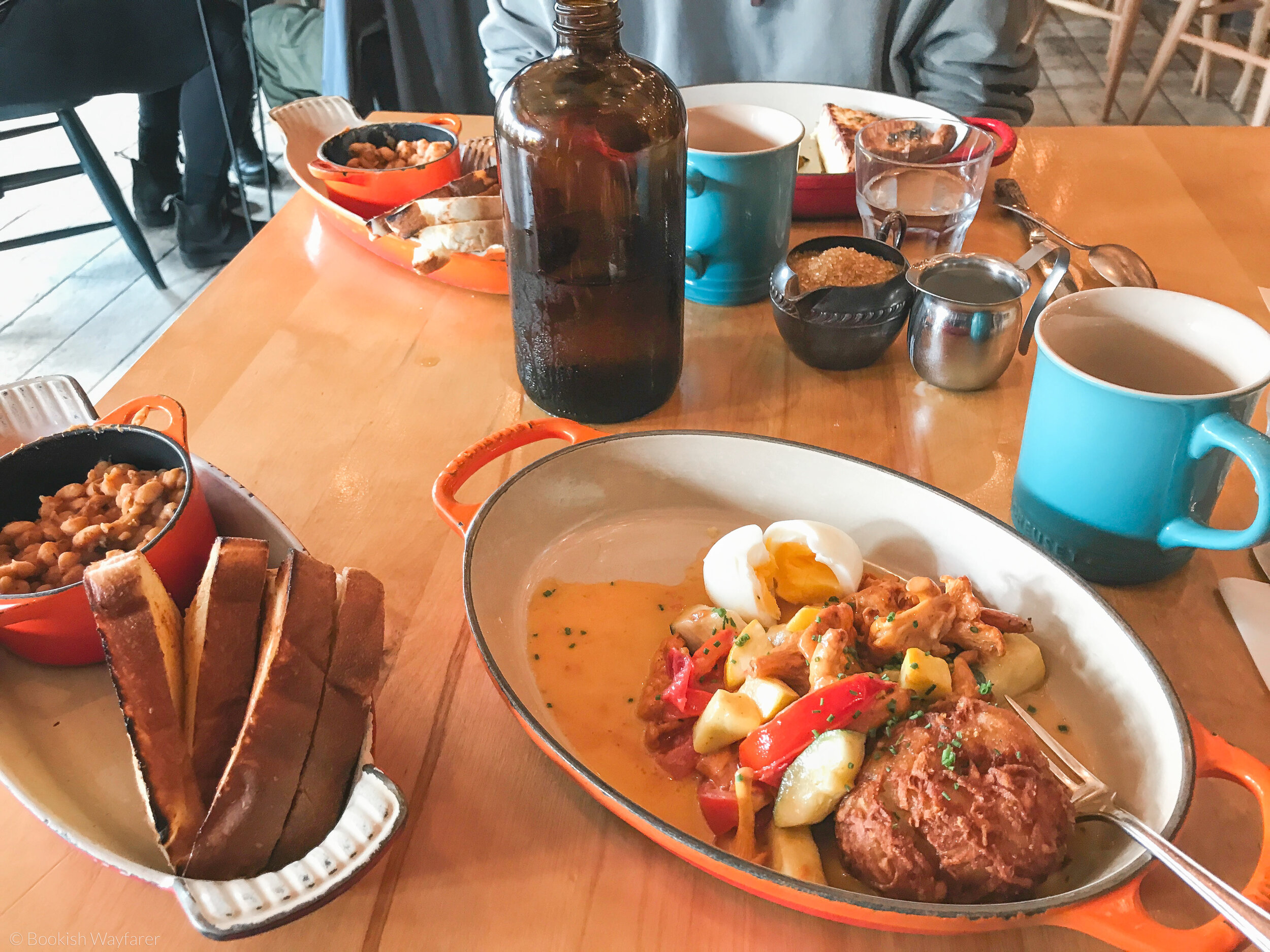Traveling as a Vegetarian
Scrumptious, vegetarian brunch at Mallard Cottage in St. John’s, Newfoundland
Some links in this post are affiliate links, meaning I will earn a commission (at no extra cost to you) if you click through and make a purchase. For more info, please see my disclaimer.
“What are you going to do for food?”
Without fail, this is one of the first questions I receive when people find out that I am traveling somewhere. There is a pervasive misconception that unless you eat meat, you can’t travel without becoming malnourished. (Actually, the misconception is more like you can’t help but become nutrient-deficient if you forgo meat, regardless of whether you travel or stay put, but that’s a whole other topic of conversation.) Having now been to multiple countries, all while maintaining a vegetarian diet, I can confidently say that you can travel and have your cake meat-free diet too. What follows are some of my tips and tricks for traveling as a vegetarian.
1. Research the Food Culture
Once you decide on where you want to go, research the area’s food culture. Is the local diet fairly meat-heavy, or does it feature a decent array of non-meat food groups, such as grains and vegetables? With the myriad of travel sites out there, you should be able to find at least one post that discusses the cuisine of your intended destination. If not, then community board-style websites, such as Reddit and Tripadvisor, would be your next best bet, as you can post questions and hopefully get a response from someone. With regard to Reddit, you would want to search for the subreddit for wherever you are traveling to and then post your question there. For example, if you had a question about what the food scene in Slovakia was like, you would go to the Slovakia subreddit and post your question there.
2. Find Veggie-Friendly Restaurants
Take advantage of apps like Happy Cow (one of my favorite apps, which works internationally), as well as blog posts from plant-based travelers, to find vegetarian-friendly restaurants where you’re traveling. Yelp can also be a helpful resource, as people will often create lists on Yelp of their favorite vegetarian restaurants in a given location.
3. Vegan Passport
If you are traveling to a country where your primary language is not widely spoken, consider purchasing the Vegan Passport. The Vegan Passport explains in 78 languages what foods you can eat as part of a vegan diet, making it a great resource to use at restaurants abroad. You can simply present the appropriate page to your waiter before ordering your meal so that they can be made aware of your dietary restrictions. As implied by its name, the Vegan Passport describes a vegan diet, so if you are a lacto-ovo vegetarian, you will either have to make peace with forgoing dairy or explain to the waiter that dairy is okay. The Vegan Passport can be downloaded as an app or purchased as a physical book.
4. Cook
If your travel destination has a very meat-centric diet and consequently does not have many restaurants with vegetarian food options, then you should consider renting a place with a kitchen and cooking some of your meals. If I know that I’ll be having to cook on a trip, I like to gather up and bring several simple, healthy recipes with me. This makes grocery shopping at the destination much easier, as I’m not having to think of what to cook while jet-lagged. In terms of finding an accommodation with a kitchen, I’ve had good luck using Airbnb and Vrbo. You can filter their listings for places with a kitchen, which is super handy.
5. Eat Balanced Meals
As tempting as it is to throw everything out the window when you travel and order whatever you want, you should strive to have the majority of your meals be nutritious and well-balanced. A treat now and then while on vacation is fine; just be sure you’re not eating junk food for every meal. Cooking at least one meal per day can go a long way toward achieving this goal. I, for instance, will typically cook my own breakfast when I travel (oatmeal with some fresh fruit is my go-to). Making your own breakfast can also save you a bit of money.
6. Carry Snacks with You
This is especially important if you will be somewhere rural where there are not many nearby food options, let alone vegetarian-friendly ones. A snack, such as a granola bar or nuts, can help stem the tide between your meals. Just toss a couple of filling snacks in your purse or backpack before heading out for the day.
7. Customize Your Airplane Meal
If you are traveling on an airline that serves a meal during the flight, you can typically request a vegetarian meal. Oftentimes, this request can be made online, but for some airlines, you might have to call customer service. Airlines typically have a cut-off time by which this request must be made, so be sure to either look on the airline’s website or speak with a customer representative to find out when/how you can request a vegetarian meal.
8. Be Open-Minded
Perhaps most importantly, be open-minded when it comes to trying new plant-based foods. One of my favorite aspects of traveling is sampling foods that I’ve never had before or have not had prepared in a certain manner. Just because you’ve cooked a given food at home and haven’t enjoyed it doesn’t mean you should write off ever ordering it at a restaurant.
Do you have any other tips that you would add? Share your thoughts in the comments below!
-Julia
P.S. If you enjoyed this post, please consider supporting me on Buy Me a Coffee.




